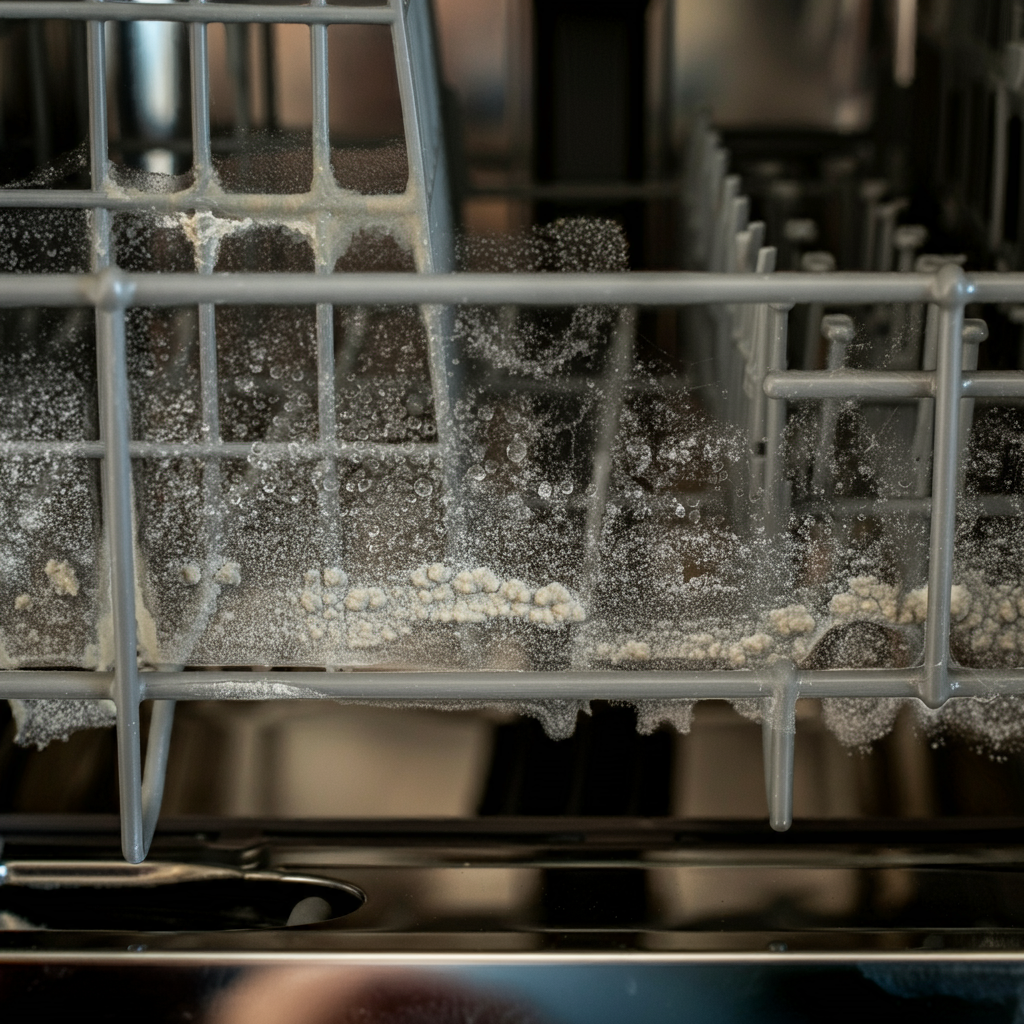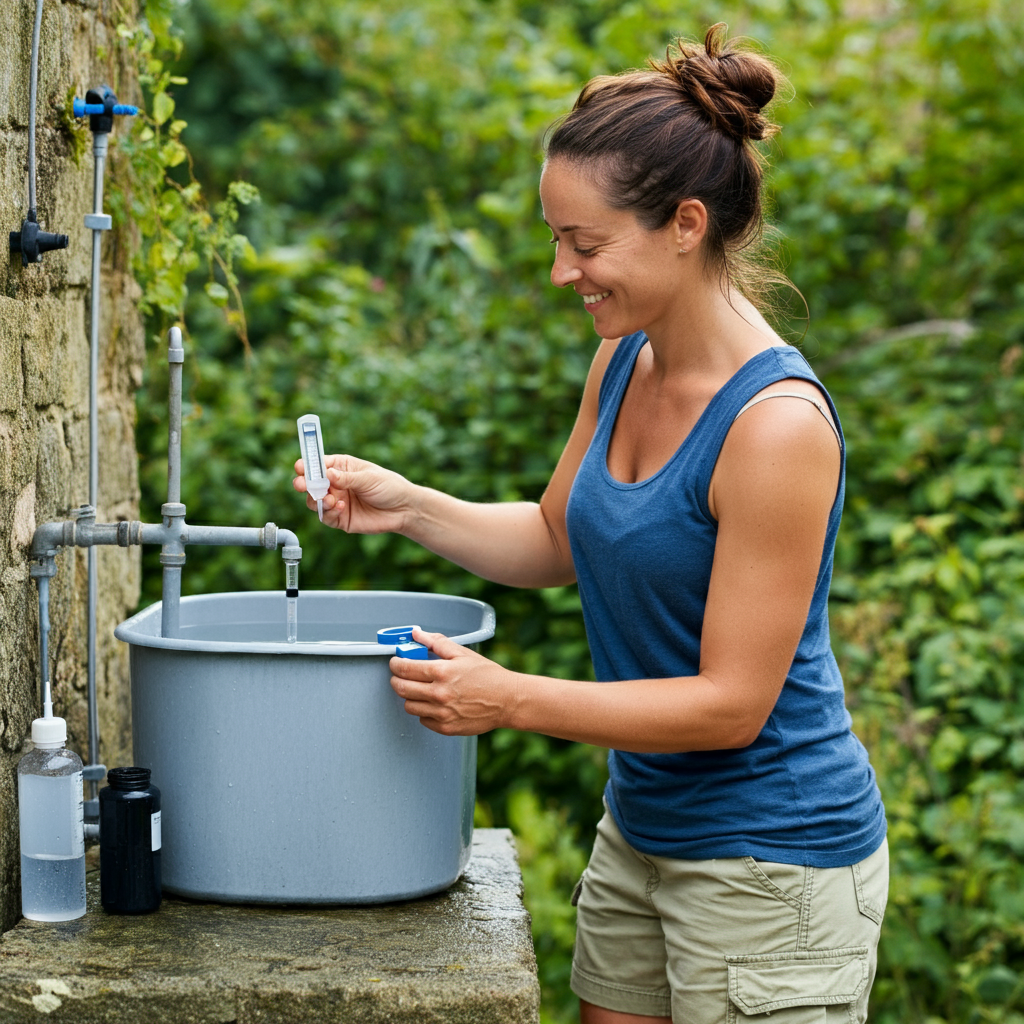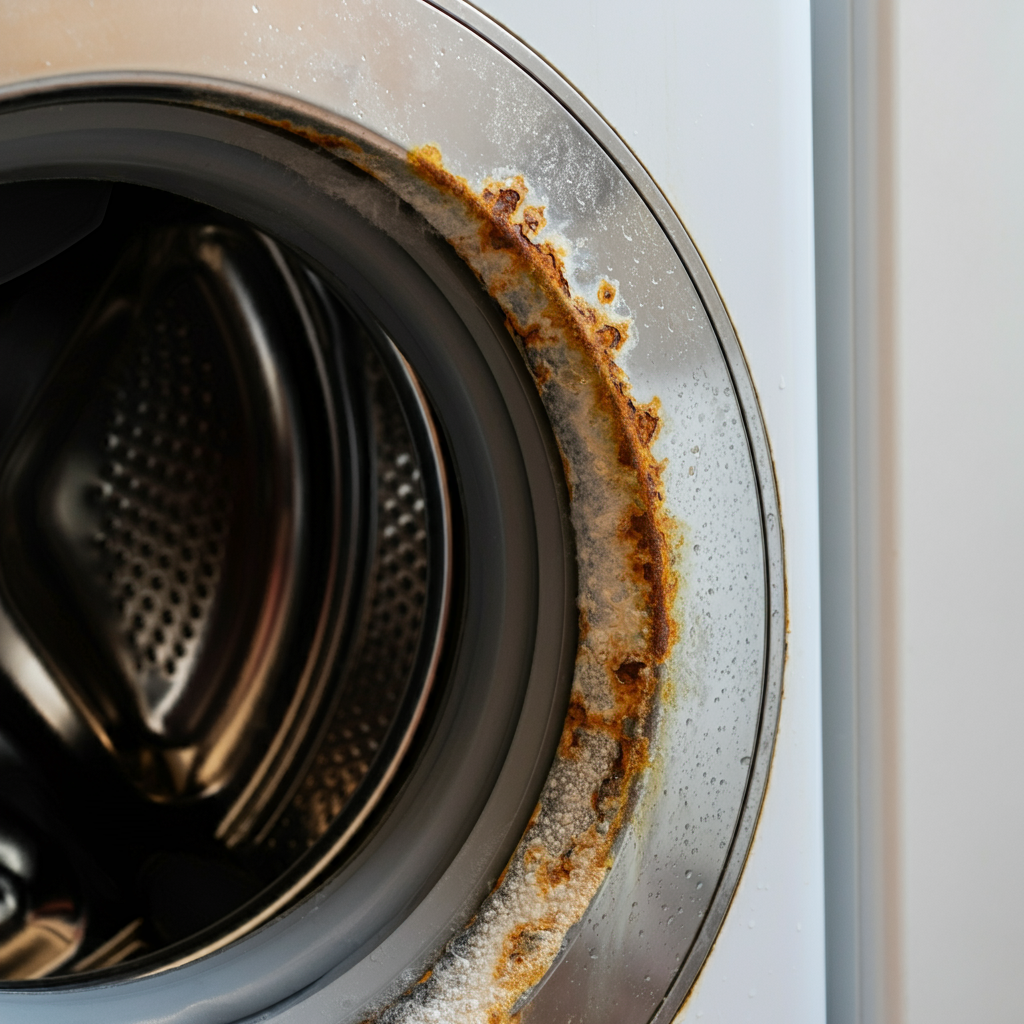Yes, the amount of water your dishwasher and washing machine use directly impacts the size of the water softener you need. As your trusted water softening experts at WaterSoftenerSizing.com, we understand the importance of getting this right. An adequately sized water softener ensures your appliances operate at peak efficiency, last longer, and save you money on energy bills and repairs. Hard water, which is water with a high mineral content, wreaks havoc on appliances like dishwashers and washing machines. These minerals, primarily calcium and magnesium, build up as scale on heating elements, pipes, and internal components. This buildup not only reduces the efficiency of your appliances but also leads to costly repairs and replacements. A water softener is designed to remove these minerals through a process called ion exchange, replacing them with sodium or potassium ions. However, the effectiveness of this process depends on having a water softener that’s appropriately sized for your household’s specific water usage. If your softener is too small for your water-consuming appliances, it will have to regenerate (clean itself) more frequently, leading to higher salt usage, increased wear and tear on the system, and potentially still leaving some hard water minerals in your water supply. In contrast, a properly sized water softener will efficiently remove minerals, protect your appliances from hard water damage, and provide you with the soft, luxurious water you deserve. At WaterSoftenerSizing.com, we can help you determine the perfect softener size for your home based on factors such as your water hardness level, daily water usage, and the types of appliances you use.
Hard Water’s Harsh Reality: Why Your Appliances Are Thirsty for Soft Water
Hard water, simply put, is water with a high concentration of dissolved minerals, primarily calcium and magnesium. These minerals are picked up as water travels through rocks and soil. While generally safe to drink, hard water leaves behind a trail of problems, especially for your water-hungry appliances. Imagine washing your dishes in water that leaves behind a chalky residue or doing laundry that comes out feeling stiff and scratchy. That’s the work of hard water. The dissolved minerals in hard water react with soap and detergent, reducing their effectiveness and leaving behind soap scum and mineral deposits.
Hard Water’s Impact on Dishwashers and Washing Machines
In your dishwasher, hard water can lead to:
- Scale buildup: Mineral deposits accumulate on the heating element, spray arms, and interior surfaces. This buildup not only looks unsightly but also reduces the dishwasher’s efficiency.
- Cloudy glassware: Hard water leaves spots and films on glasses, making them appear cloudy even after washing.
- Reduced cleaning power: The minerals interfere with detergent’s ability to lather and clean, resulting in dishes that aren’t as sparkling as they should be.
Your washing machine suffers too, with hard water causing:
- Dull, dingy laundry: Mineral deposits embed themselves in fabric fibers, making colors fade and whites look dull.
- Stiff, scratchy clothes: Fabrics lose their softness and suppleness due to mineral buildup.
- Increased wear and tear: The harshness of hard water can damage the washing machine’s internal components, leading to a shorter lifespan.
These issues not only affect the performance of your appliances but also your wallet. A study commissioned by the Water Quality Association (WQA) found that hard water can shorten the lifespan of washing machines by up to 40% and dishwashers by up to 30%. Additionally, using more detergent and energy to compensate for hard water’s effects can significantly increase your utility bills.
The Science Behind the Scale
The culprit behind most hard water woes is limescale, a chalky white substance composed primarily of calcium carbonate. When hard water is heated, like in your dishwasher or washing machine, the dissolved calcium and magnesium ions react with carbonate ions, forming insoluble calcium carbonate that precipitates out of the water and adheres to surfaces. This process accelerates as water temperature increases, exacerbating the problem in hot water appliances. In contrast, soft water, which has had its mineral content removed or significantly reduced, doesn’t leave behind these damaging deposits. This is where water softeners come into play. By removing the calcium and magnesium ions from your water supply, a water softener prevents limescale buildup and protects your appliances from hard water’s damaging effects.
How Much Water Do Your Appliances Actually Use?
Understanding the water consumption of your appliances is the first step in determining the right water softener size for your home. It’s important to note that not all appliances are created equal when it comes to their thirst for water. Even within the same category, water usage can vary significantly depending on the model, age, and settings.  Let’s take a closer look at the typical water usage of dishwashers and washing machines:
Let’s take a closer look at the typical water usage of dishwashers and washing machines:
Dishwasher Water Usage
- Standard Dishwasher: An average dishwasher uses around 6 gallons of water per cycle. However, older models can use as much as 10 gallons per cycle.
- High-Efficiency Dishwasher: These models are designed to conserve water, typically using 3-5 gallons per cycle. Some Energy Star certified dishwashers use as little as 2.5 gallons per cycle.
The actual water usage of your dishwasher can vary depending on factors such as the selected cycle, load size, and whether or not you pre-rinse your dishes.
Washing Machine Water Usage
- Standard Top-Load Washer: Older top-load washing machines can use a whopping 40 gallons of water per load.
- High-Efficiency Top-Load Washer: These models are more water-conscious, typically using 15-30 gallons per load.
- High-Efficiency Front-Load Washer: Front-load washers are generally the most efficient, using 10-25 gallons per load.
Similar to dishwashers, the water usage of washing machines can fluctuate based on the cycle, load size, and soil level.
Factoring Water Usage into Softener Sizing
Why is all of this important for water softener sizing? Well, the more water your appliances use, the more hard water minerals your softener will need to remove. This translates to a higher demand on your softener’s capacity and a more frequent need for regeneration. To illustrate, consider a household with a standard top-load washing machine that uses 40 gallons per load. If they do laundry three times a week, that’s 120 gallons of water passing through the softener. If the water hardness is high, say 20 grains per gallon (GPG), the softener would need to remove 2,400 grains of hardness per week just from laundry alone! This is why it’s crucial to accurately estimate your household’s total water usage, including appliance usage, when determining the appropriate size for your water softener.
Sizing Up Your Softener: The Appliance-Water Softener Connection
Now that we understand the impact of hard water on appliances and their varying water usage, let’s explore how this knowledge translates to choosing the right water softener size. The goal is to strike a balance between effectively treating your water and ensuring the longevity and efficiency of your softener.
Water Softener Capacity: Grains and Gallons
Water softeners are rated by their capacity, measured in grains. One grain is equivalent to 17.1 milligrams of calcium carbonate, the primary component of limescale. This capacity determines how much hardness a softener can remove before needing to regenerate. The size of the softener you need depends on two main factors:
- Your household’s daily water usage: This includes water used for drinking, cooking, bathing, cleaning, and, of course, running your appliances.
- The hardness of your water: Water hardness is measured in grains per gallon (GPG). The higher the GPG, the harder your water is and the more grains your softener needs to remove.
For example, a family of four with a water hardness level of 15 GPG and a daily water usage of 300 gallons would need a softener with a capacity of at least 4,500 grains (15 GPG x 300 gallons). However, it’s recommended to choose a softener with a slightly higher capacity, known as reserve capacity, to account for fluctuations in water usage and ensure the softener doesn’t have to regenerate too frequently.
Regeneration and Appliance Usage
Regeneration is the process by which a water softener cleans itself and recharges its ability to remove hardness minerals. The frequency of regeneration depends on the softener’s capacity and your water usage. Appliances that use a lot of water, like washing machines, can significantly impact the frequency of regeneration. If your softener is too small for your appliance usage, it will have to regenerate more often, consuming more salt and potentially shortening its lifespan.
Our Expertise at WaterSoftenerSizing.com
At WaterSoftenerSizing.com, we specialize in helping homeowners accurately assess their water softener needs. We understand that every home is different, and we take a personalized approach to ensure you get the right-sized softener for your specific situation. Our team of water treatment professionals can help you determine your water hardness, estimate your daily water usage, and recommend the ideal softener size and features based on your appliance needs and lifestyle. We also offer a free online water softener sizing calculator that you can use as a starting point for your research.
Don’t Get Overwhelmed! Our Water Softener Sizing Calculator Is Here to Help
Sizing a water softener might seem like a complex task, but it doesn’t have to be. At WaterSoftenerSizing.com, we’ve developed a user-friendly, free online calculator that takes the guesswork out of the process. How It Works Our water softener sizing calculator is designed with you in mind. It asks for a few simple pieces of information:
- Your household size: This helps estimate your daily water usage.
- Your water hardness level: You can find this information on your water bill or by using a simple home water test kit.
- The types of appliances you use: You’ll select from a list of common appliances, including dishwashers and washing machines, to factor in their specific water usage.
Once you’ve entered this information, our calculator will crunch the numbers and provide you with a recommended softener size in grains. It’s that easy! Why Use Our Calculator
- Accuracy: Our calculator is based on industry-standard sizing guidelines and takes into account all the essential factors that impact softener size.
- Convenience: It’s available 24/7 on our website, so you can use it whenever it’s convenient for you.
- No Obligation: It’s completely free to use, and you’re under no obligation to purchase anything from us.
A Starting Point, Not the Final Word While our calculator provides a reliable starting point, we always recommend consulting with a water treatment professional for a personalized assessment. They can further refine the sizing based on your specific needs and preferences, and also recommend the best type of softener for your home. Remember, choosing the right size water softener is an investment in the health of your appliances and the comfort of your home. Don’t let hard water rob you of these benefits. Take the first step towards softer water today by using our water softener sizing calculator.
Beyond Appliances: Other Factors That Influence Softener Size
While dishwashers and washing machines are major water consumers, they’re not the sole determinants of your water softener size. Several other factors come into play, each contributing to your overall water usage and, consequently, the capacity your softener needs.
Household Size: More People, More Water
It’s simple math: the more people in your household, the more water you’re likely to use. Each person contributes to the daily water demand through activities like showering, bathing, cooking, and cleaning. A larger household typically necessitates a water softener with a greater capacity to handle the increased water flow.
Daily Water Usage Habits: Shower Power vs. Bath Lovers
Beyond the number of people, your household’s specific water usage habits also matter. Do you have family members who enjoy long, luxurious showers? Do you frequently run the dishwasher or washing machine? Are you a gardening enthusiast who waters your plants regularly? These habits can significantly impact your overall water consumption. For instance, a single 20-minute shower can use up to 50 gallons of water, while a full bathtub can hold 80 gallons or more. If you have multiple family members taking long showers daily, your water softener needs to be able to handle this increased demand.
Local Water Quality Reports: Your Hardness Baseline
Your local water quality report, often available on your municipal water supplier’s website, provides crucial information about the hardness of your water. This report will typically express hardness in grains per gallon (GPG) or milligrams per liter (mg/L) of calcium carbonate. Understanding your water hardness is essential for determining the right softener size. If your water is very hard (20 GPG or higher), you’ll need a larger capacity softener than someone with moderately hard water (10-15 GPG).
The Water Heater: A Hidden Water Hog
While not often considered in the same category as dishwashers and washing machines, your water heater is another significant water user. It’s constantly refilling and heating water as it’s used throughout your home. A larger household or one with high hot water usage will require a water softener that can keep up with the demand. Incorporating all of these factors into your calculations will give you a more accurate picture of your water softener needs. At WaterSoftenerSizing.com, our free online calculator takes all of these variables into account, providing you with a personalized recommendation for your ideal softener size. It’s a simple, convenient way to get started on your journey to softer water. Remember, choosing the right size water softener is an investment in your home and your appliances. By considering all the factors that contribute to your water usage, you can ensure that your softener is up to the task of providing soft, clean water for years to come.
What If My Current Water Softener Isn’t Cutting It?
If you already have a water softener but are still experiencing the telltale signs of hard water, it’s possible your current system isn’t adequately sized to handle your household’s water demand. Here are some common signs that your water softener may be undersized:
- Frequent Regeneration Cycles: If your softener is constantly regenerating, it’s a clear indication that it’s struggling to keep up with the demand for soft water. A properly sized softener should regenerate every few days, not every day or multiple times a day.
- Spotty Hard Water Symptoms: If you notice soap scum on shower doors, spotty dishes, or dry, itchy skin even with a water softener installed, it could mean your softener isn’t removing all the hardness minerals from your water.
- Reduced Appliance Performance: Appliances not functioning as efficiently as they used to, or requiring more detergent than usual, can also be signs of an undersized softener.
Consequences of an Undersized Water Softener
Using an undersized water softener is not only frustrating but can also lead to several issues:
- Wasted Salt and Water: Frequent regenerations waste both salt and water, leading to higher operating costs.
- Increased Wear and Tear: Constant regeneration puts extra stress on the softener’s components, potentially shortening its lifespan.
- Continued Hard Water Problems: An undersized softener won’t fully protect your appliances from hard water damage, leading to premature wear and tear, reduced efficiency, and costly repairs.
Solutions for an Undersized Water Softener
If you suspect your water softener is undersized, there are a few options to consider:
- Upgrade to a Larger Softener: The most effective solution is to replace your current softener with a larger one that can adequately handle your household’s water usage and hardness level.
- Adjust Water Usage Habits: While not always feasible, reducing water usage can help alleviate the strain on your softener. For example, you could take shorter showers, run the dishwasher and washing machine only with full loads, and fix any leaks promptly.
- Install a Booster Pump: In some cases, a booster pump can be added to the system to help increase water flow and improve softener performance. However, this is usually a temporary fix and not a substitute for a properly sized softener.
Ultimately, the best solution will depend on your specific situation and budget. We recommend consulting with a water treatment professional to assess your needs and recommend the most appropriate course of action.
Choosing the Right Water Softener
Selecting the ideal water softener involves more than just determining the right size. Various types and features are available, each with its own advantages and considerations, especially for households with high appliance usage. Let’s break down your options.
Types of Water Softeners: Salt-Based vs. Salt-Free
The two main types of water softeners are salt-based and salt-free.
- Salt-Based Water Softeners: These systems use ion exchange to replace hardness minerals (calcium and magnesium) with sodium. They are highly effective at removing minerals and offer a wide range of capacities to suit different household needs. However, they require regular salt replenishment and may not be ideal for individuals on sodium-restricted diets.
- Salt-Free Water Softeners: Also known as water conditioners, these systems don’t remove minerals but instead alter their structure to prevent them from forming scale. They are a good option for those who want to avoid adding sodium to their water but may not be as effective as salt-based softeners, especially in areas with very hard water.
Features to Consider for Appliance Protection
When choosing a water softener with your appliances in mind, consider these features:
- High-Efficiency Regeneration: This feature optimizes the regeneration process, reducing salt and water usage while maintaining softener effectiveness. It’s particularly beneficial for households with high water-consuming appliances.
- Demand-Initiated Regeneration (DIR): DIR systems monitor water usage and initiate regeneration only when needed, rather than on a fixed schedule. This can help conserve salt and water, especially if your appliance usage fluctuates.
- Salt-Saving Technology: Some softeners use advanced technology to reduce salt consumption without sacrificing performance. This can be a cost-effective and environmentally friendly option.
Recommendations for High Appliance Usage Households
For households with heavy dishwasher and washing machine usage, we recommend considering salt-based water softeners with high-efficiency regeneration and/or DIR technology. These features help ensure that your softener can keep up with the demand for soft water while minimizing salt and water waste. Popular brands like SoftPro, Kinetico, Culligan, and EcoWater Systems offer a variety of models with these features, catering to different household sizes and water hardness levels. Consult with a water treatment professional or use our WaterSoftenerSizing.com calculator to get personalized recommendations based on your specific needs. Choosing the right water softener is a decision that will impact the health of your appliances, your water quality, and your overall satisfaction. By understanding the different types of softeners and the features that cater to high appliance usage, you can make an informed choice that benefits your entire household. 
Keep Your Softener and Appliances Happy: Maintenance Tips
A well-maintained water softener is essential for protecting your appliances and ensuring consistent soft water delivery. By following a few simple maintenance tasks, you can extend the lifespan of your softener, prevent costly repairs, and keep your appliances running smoothly. Regular maintenance not only ensures optimal performance but also helps you identify potential issues early on, preventing them from escalating into major problems. It’s a small investment of time and effort that yields significant returns in the long run.
Essential Water Softener Maintenance Tasks
Here’s a quick checklist to keep your water softener in top shape:
- Check Salt Levels Regularly: Salt is the lifeblood of your softener, as it’s used to regenerate the resin beads that remove hardness minerals. Make it a habit to check the salt level in the brine tank at least once a month and refill it when it gets low. Most softeners have a low-salt indicator light to remind you.
- Clean the Brine Tank: Over time, salt can bridge or clump together in the brine tank, preventing it from dissolving properly. This can hinder the regeneration process and reduce the softener’s efficiency. It’s a good practice to clean the brine tank at least once a year or as recommended by the manufacturer.
- Inspect for Leaks: Regularly check for leaks around the softener’s connections, valves, and hoses. Leaks not only waste water but can also indicate a problem with the system. If you notice any leaks, address them promptly to prevent further damage.
- Schedule Professional Maintenance: While you can perform many maintenance tasks yourself, it’s recommended to have a professional inspect your softener annually. They can check for any hidden issues, clean internal components, and ensure your system is operating at peak efficiency.
Signs Your Water Softener Needs Attention
In addition to routine maintenance, be on the lookout for these signs that your softener may need attention:
- Hard Water Symptoms Return: If you start noticing soap scum, spotty dishes, or dry skin again, it could be a sign that your softener isn’t working properly.
- Salty or Metallic Taste in Water: This could indicate a problem with the brine tank or resin bed, requiring professional inspection.
- Low Water Pressure: A decrease in water pressure could be caused by a clogged filter or a malfunctioning valve in the softener.
Your Appliances Will Thank You: Investing in the Right Water Softener Size
Choosing the right water softener size isn’t merely about preventing soap scum or enjoying softer skin. It’s a strategic decision that directly impacts the longevity and performance of your household appliances, particularly your dishwasher and washing machine. By understanding the intricate relationship between appliance water usage and softener capacity, you can make an informed choice that saves you money, conserves resources, and ensures your appliances operate at their best. We’ve explored how hard water, laden with minerals, can wreak havoc on your appliances, leading to scale buildup, reduced efficiency, and costly repairs. We’ve also delved into the varying water consumption of different appliance models, highlighting the importance of factoring this into your softener sizing calculations.
Key Takeaways
- Hard water is harsh: It reduces appliance efficiency, increases energy consumption, and shortens lifespan.
- Appliances vary in water usage: Dishwashers and washing machines have different water needs, impacting softener sizing.
- Softener capacity matters: Match the softener’s grain capacity to your household’s water hardness and daily usage.
- Regeneration frequency is key: High appliance usage can lead to more frequent regeneration cycles.
- Consider additional factors: Household size, water usage habits, and local water hardness all influence softener size.
- Use our calculator: WaterSoftenerSizing.com’s free calculator simplifies the sizing process.
- Consult a professional: For personalized advice and recommendations, reach out to a water treatment expert.
Take the Next Step Towards Softer Water and Happier Appliances
Ready to transform your water and protect your appliances? Start by using our free water softener sizing calculator at WaterSoftenerSizing.com. It’s a quick and easy way to get a preliminary estimate of the right size for your needs. For personalized guidance and expert recommendations, don’t hesitate to contact our team of water treatment professionals. We’re here to help you make the best choice for your home and your appliances.

Craig “The Water Guy” Phillips is the founder of Quality Water Treatment (QWT) and creator of SoftPro Water Systems.
With over 30 years of experience, Craig has transformed the water treatment industry through his commitment to honest solutions, innovative technology, and customer education.
Known for rejecting high-pressure sales tactics in favor of a consultative approach, Craig leads a family-owned business that serves thousands of households nationwide.
Craig continues to drive innovation in water treatment while maintaining his mission of “transforming water for the betterment of humanity” through transparent pricing, comprehensive customer support, and genuine expertise.
When not developing new water treatment solutions, Craig creates educational content to help homeowners make informed decisions about their water quality.


